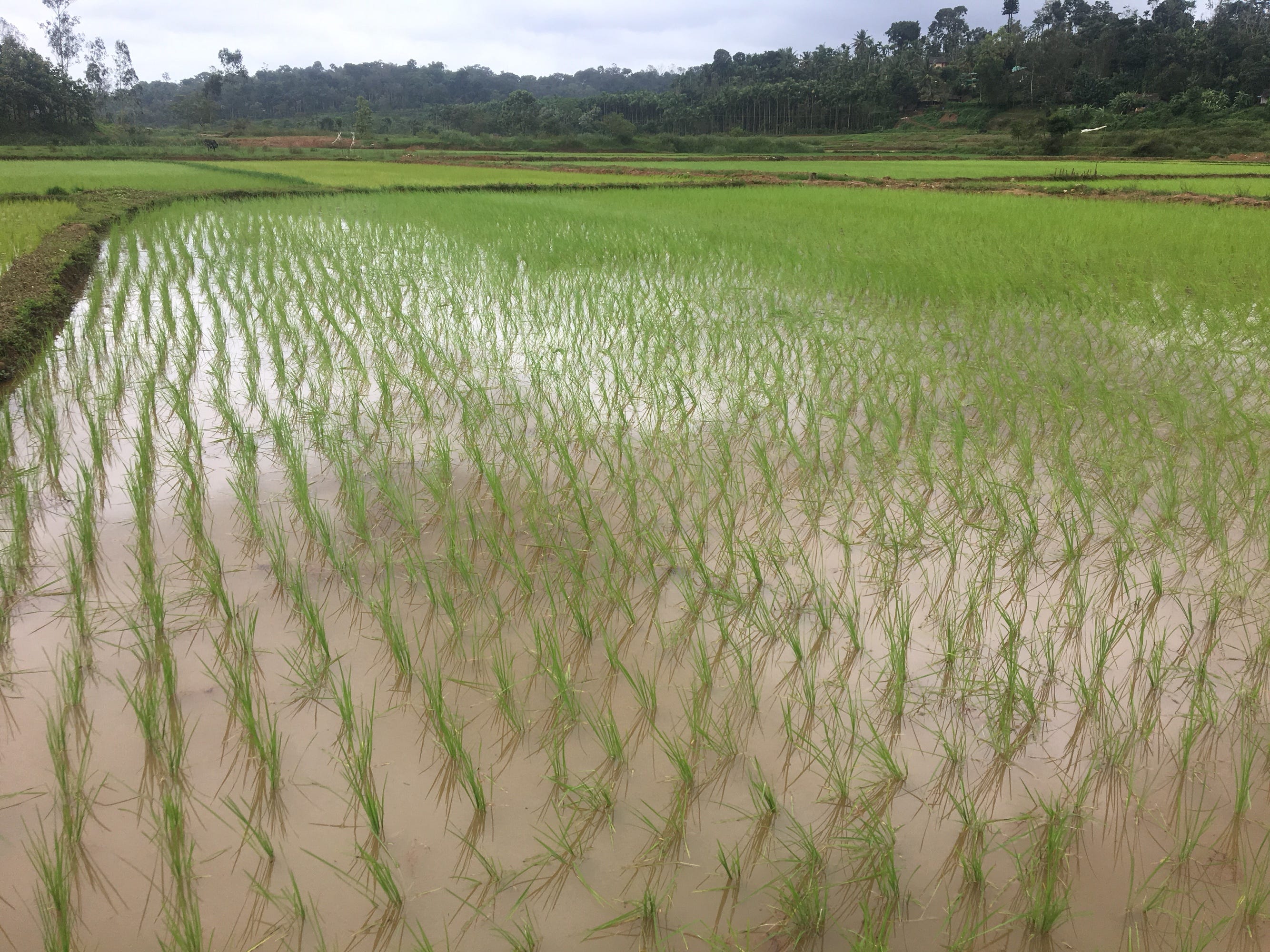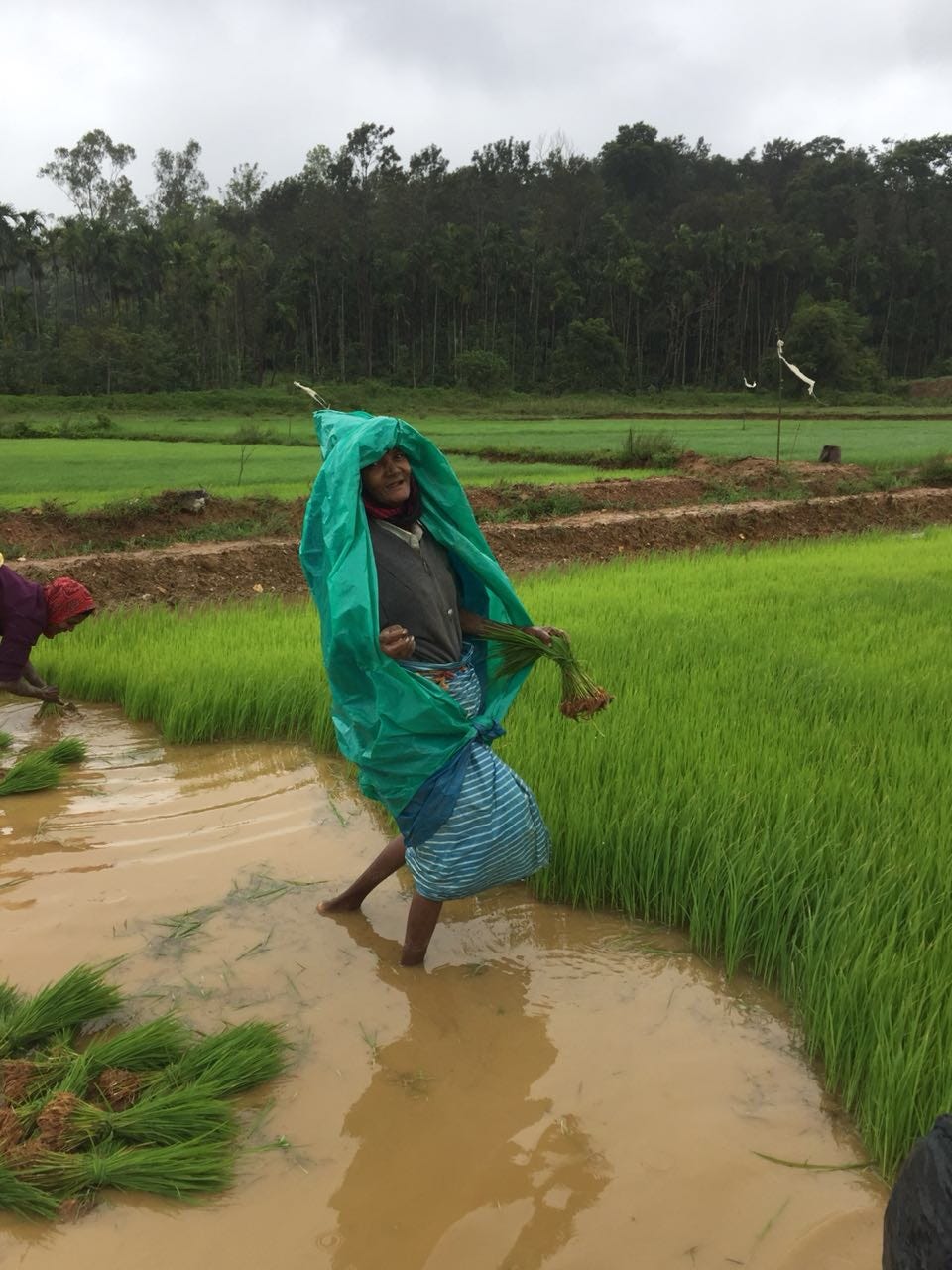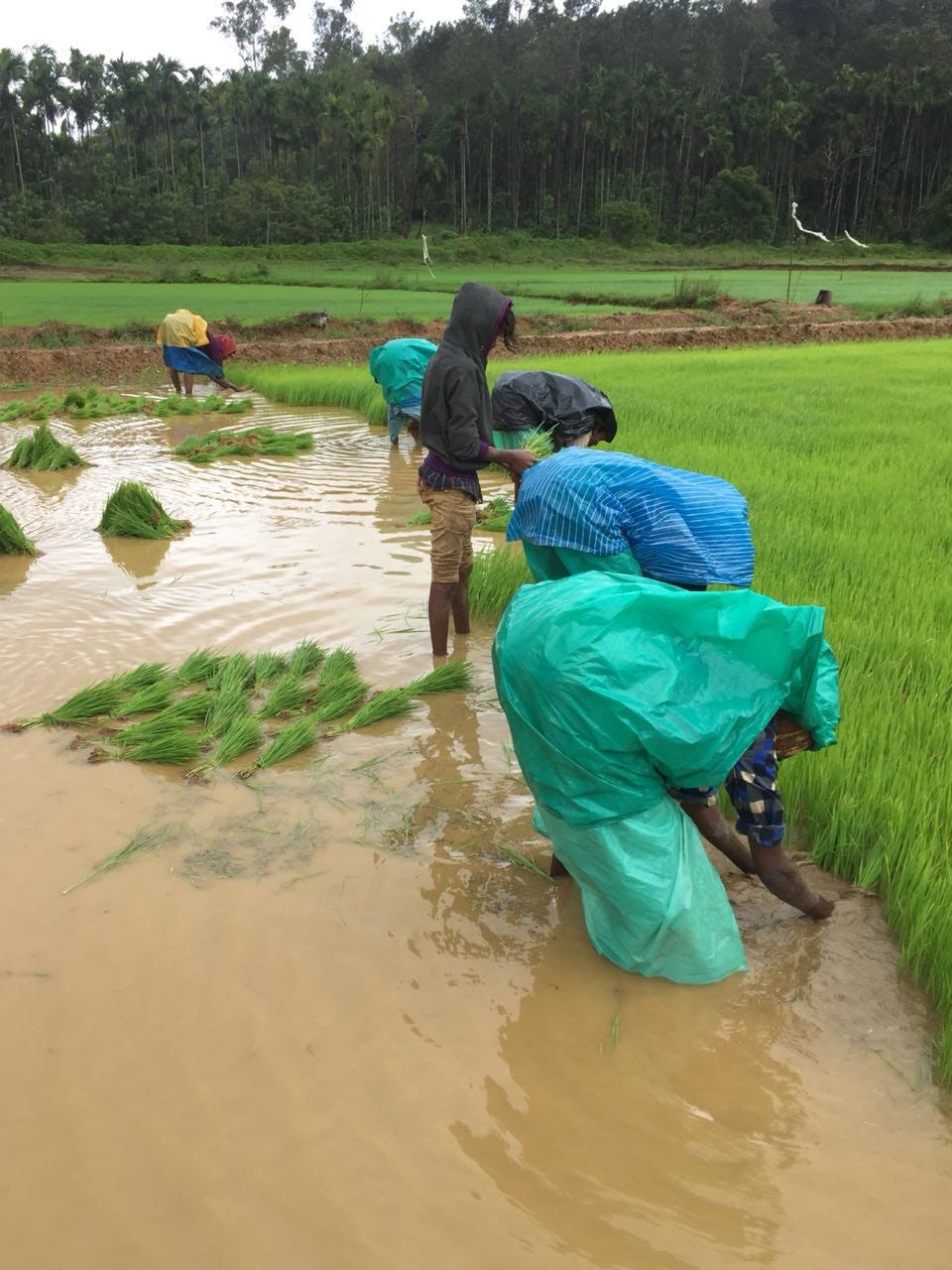

Two weeks before the devastating rainfall that destroyed large parts of Coorg, I had the privilege of spending a few days with Mr Kechamada Uthappa, and his family. Mr Uthappa, who lives in the Kutta region of Coorg, is one of the few planters who still grows paddy. A little known fact is that paddy is the traditional crop of Coorg and not coffee, that it is now famous for.
After an interesting conversation with his daughter Pooja, an environmental engineer, I learned that paddy cultivation actually helps with rejuvenating the river. So I made way up to Coorg to see this for myself. While I did learn about how this happens, it was the warmth from Mr Uthappa, with his wry sense of Kodava humour, incredible energy at 67, infinite patience in answering my questions, his wife who gently guides the whole household and his daughter, who is a true a daughter of the soil, gave me an incredibly real and fulfilling experience in this ‘digital world’, it honestly made me happy.
After meeting them, I have come to believe that, If geography is destiny, then the people of Coorg are the guardians of River Cauvery.



In the old days the land was seen as a boon from the Goddess Cauvery and the land belonged to her. They celebrated the river and did everything in their power to care for her. To them it was ‘Cauverammas Bhoomi’.
‘Naati Pani’or paddy cultivation is what deeply connected the people of Coorg to their land and River Cauvery. It was also the most exciting time of the year, with every one coming together, it was almost like a celebration of the river itself. Owners used to plough the land themselves and shared a close relationship with the workers. Everyone would sing songs of the Cauvery to make their work light. They valued the river because she provided for them. They worked hard for their food and rice was a staple in their diets – think akki ottis and kadambuttus. Rice is not something they ordered online, unlike our generation who have a very transactional relationship with food.


‘Naati pani’ requires a lot of work and patience. Infact, Mr Uthappa says that it requires ‘Aar-Ambu’ or 6 arrows – fertile land, cattle, workers, rain, seeds and implements. The relationship with ‘Naati’ is also very intrinsic with water – The rain feeds the fields and the fields feed the river and recharge the ground water. Most planters today have even built large tanks to harvest rain water.
The land is divided into multiple fields and work begins in the cold wet monsoons and ends six months later. Mr Uthappa remembers how his grand mother would wake them up at 4 am to begin paddy work in the fields – she would ensure there was enough food and drink for everyone including the labourers.
pix04
The paddy land is usually dived into Baleya theva – the biggest field, the Yaka – the sowing field which was slightly elevated so that it could retain water and was always situated closest to the stream, Chali or the central field allowed for the flow of water and Podup which is clay soil that has spring like properties and the Pada butta bel or fallow land.
Each of these fields is fed by rain water and controlled by shallow streams which is then fed back into the river. Mr Uthappas fields feed back into the Lakshman tirtha, a tributary of the Cauvery. Most of the knowledge and traditions and even geographical understanding on what should be grown is passed down orally and Mr Uthappa is hopeful that today, even though most of them don’t encourage their children to work in the fields there will be a time when everyone will come back to their roots.
The end of ‘Naati pani’ is celebrated with Kail-Podh. In keeping with their martial traditions all the implements would be polished, decorated with the ‘Thok-poo’ (which is now available only in the ‘Devara Kadus’ or Sacred forest groves maintained by each village). It was also a time where they could enjoy a break from their hard labour of ‘Naati pani’ and food, song and folk dancing would be indulged in.
Unfortunately, today most of the paddy fields are being left fallow or being converted into ‘holiday home sites’, reducing the ground water levels, changing the culture and even the food habits. The koile meen (fish commonly found in paddy fields), local rice varieties like Doddi and Boliya are fast disappearing. Reality is that rice is now being bought by the Karnataka government from Andhra Pradesh (where incidentally I am from).
It hit home when Mr Uthappa, told me of a kodava saying, “if you want to ruin a man you don’t need black magic, all you have to do is ask him to replace paddy for coffee or other crops and the land will run dry.” It makes you think if you would still be able to relish your cup of ‘bella coffee’ if there was no paddy planted in Coorg?
So as you celebrate Kail-Podh this year with Pandhi curry and Kadambuttus, or have ever visited Coorg and enjoyed her hospitality, remember that you are the guardian of River Cauvery and send out a special thought to all that she has provided.
Follow our series about the #CultureOfWater @SaveRiverCauvery on Facebook, Twitter and Instagram.
source: http://www.medium.com / Medium.com / Home / by Rohita R Madappa / September 02nd, 2018

